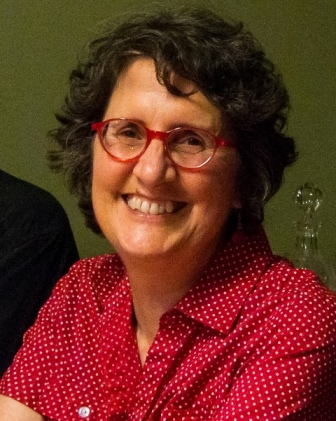On Title IX’s bench: the ACLU
Imagine you’re a 15-year-old girl and something’s happening at school that you think is unfair to girls or LGBTQ students. School administrators and even school district officials ignore your complaints or tell you to go away. Who you gonna call? If you’ve never heard of the various legal groups that specialize in helping women or LGBTQ people, you’ve probably heard of the ACLU — the American Civil Liberties Union.
Maybe the boys got a new baseball field while girls’ softball is stuck on a rutted, run-down community diamond. Or a teacher keeps touching students in creepy ways. Or boys get academic opportunities and mentorship not offered to girls. Or administrators tell a pregnant student that she must leave school until the baby is born but they let the boy who impregnated her stay in class. Or a group of bullies keep harassing a transgender student on campus. (All are recent real-life examples of violations of Title IX, the law prohibiting sex discrimination in federally funded education.)
For decades, students and their parents have turned to the ACLU for advice or help with problems like these because they don’t know what else to do. So it might come as a surprise that the ACLU’s name doesn’t pop up as much as you might expect in the history of Title IX. When it comes to Title IX, the ACLU is a bench player. Second string. Unless, of course, they decide to take up your particular Title IX case.
A different team strategy
Part of the reason is that the ACLU does lots of other things, too. Public-interest law firms and issue-oriented legal groups cropped up in the late 1960s and beyond specifically to address the legal and civil rights of women or LGBT people. They began to draw larger shares of these kinds of cases. The arrival of the Internet facilitated that specialization. It’s easier today for a girl or a queer kid to search online for situations like theirs and find law firms, legal groups, and individual lawyers representing cases similar to their own.
There’s another reason, though. The ACLU put Ruth Bader Ginsburg in charge of its new Women’s Rights Project in 1972 — the same year Title IX became law. The year before, Ginsburg and the ACLU got the Supreme Court in Reed v. Reed to apply the Fourteenth Amendment’s Equal Protection Clause to sex discrimination for the first time. Ginsburg (yes, the same notorious RBG who now sits on the Supreme Court) then plotted out a strategy of choosing cases that she hoped would get the Supreme Court to say that sex discrimination is entitled to strict judicial scrutiny, meaning that discriminatory laws could be upheld only if they were necessary to serve a compelling state interest. That strategy steered her and the ACLU more towards cases related to employment or financial concerns.
Meanwhile, the Women’s Equity Action League began filing suits on behalf of female academics facing discrimination, among other causes. The National Organization for Women launched its Legal Defense and Education Fund in 1970; it too took up fights against sex discrimination in education in its early years. The same year that Ginsburg took the helm at the ACLU’s Women’s Rights Project, public-interest lawyers at the Center for Law and Social Policy asked Marcia Greenberger to focus on women’s issues. That project spun off as the National Women’s Law Center, one of the top Title IX champions to this day. Other groups focusing on litigation for women sprang up too, such as Equal Rights Advocates.
Taking one for the team
Another key decision point for the ACLU came after the Office for Civil Rights finally proposed regulations to implement Title IX, two years after it became law. Title IX enforcement couldn’t proceed without implementing regulations. A relatively small group of women representing educational and advocacy groups — sometimes including the ACLU’s Women’s Rights Project — had been meeting to discuss and coordinate strategy related to Title IX. (And soon morphed into the National Coalition for Women and Girls in Education.) Their lobbying to get strong regulations produced partial results, with sections they liked and others they didn’t. Now they had to decide whether to urge support for the regulations or work together to get Congress to disapprove the regulations and have the Office for Civil Rights start over.*
 Nearly unanimously, the women felt that they should not let the perfect be enemy of the good, and should support the imperfect regulations as the best they could get at the time. The ACLU representative disagreed, feeling that the regulations weren’t good enough, especially for athletics. Nevertheless, the ACLU agreed to stand aside so the coalition reached consensus to support the current regulations, recalls Margaret Dunkle, who became the first chair of the coalition. The ACLU filed its own comments about the regulations with federal officials but it didn’t try to kill the regulations.
Nearly unanimously, the women felt that they should not let the perfect be enemy of the good, and should support the imperfect regulations as the best they could get at the time. The ACLU representative disagreed, feeling that the regulations weren’t good enough, especially for athletics. Nevertheless, the ACLU agreed to stand aside so the coalition reached consensus to support the current regulations, recalls Margaret Dunkle, who became the first chair of the coalition. The ACLU filed its own comments about the regulations with federal officials but it didn’t try to kill the regulations.
By not publicly pursuing its somewhat purist view of the regulations, the ACLU Women’s Rights Project “was indeed a good partner in launching the Title IX effort,” Dunkle said in an e-mail. The ACLU took one for the team.
Ginsburg and Title IX “godmother” Bernice Sandler sought each other’s advice and discussed potential legal strategies multiple times in the 1970s, archival records show. But lawyers other than the ACLU carried most of the important Title IX-related litigation over time, and other groups became the public faces of Title IX advocates.
Still part of the team
Don’t get me wrong. Ginsburg’s work greatly benefitted women, and the ACLU still picked up a healthy share of Title IX work in the last 4+ decades. The ACLU filed an amicus brief in the appeal of Alexander v. Yale, the first Title IX case on sexual harassment in education. It represented athletes, pregnant students, and others in influential cases. The ACLU sued on behalf of transgender students recently in Oregon and Dallas, Tex. It has joined in the fight against sexual assault on campuses. See a larger sampling of its Title IX-related work here.
In the past few years the ACLU honed in on civil rights violations in sex-segregated schools and classrooms, Women’s Rights Project Director Lenora Lapidus told me. The Bush Administration in 2006 made it easier to separate academic programs by sex. Since then, more public schools “have been separating girls and boys into different classes based on these completely crazy ideas about brain differences” promulgated by the likes of Leonard Sax and Michael Gurian, she said. The pair have been training school administrators and teachers, “saying some crazy things like, `Boys are good at math. Girls are good at math three days a month when they’re having their period.’ They’re saying that about eight-year-old girls who haven’t even started menstruating yet,” Lapidus said.
Some school districts alter programming based on these theories. The Women’s Rights Project jumped on one case where a boys’ class let students go outside and run around every two hours based on the theory that only boys need to get up and run around a lot. Girls went outside only at lunch. The ACLU represented a girl with attention deficit disorder who couldn’t sit still for that long.
 When the Obama Administration launched My Brother’s Keeper to bring more government and private funding to educational resources for boys (but not girls) of color, the ACLU pushed them to clarify that single-sex classes would be allowed only in limited circumstances when there’s a strong evidence-based justification. The Washington, D.C. school district spent millions to open an all-boys high school meant especially for boys of color, with extra resources and honors for boys who reached certain benchmarks. “They had all these programs set up and, again, literally nothing for those boys’ sisters who had the exact same needs” and, in some cases, “more needs than the boys,” Lapidus said.
When the Obama Administration launched My Brother’s Keeper to bring more government and private funding to educational resources for boys (but not girls) of color, the ACLU pushed them to clarify that single-sex classes would be allowed only in limited circumstances when there’s a strong evidence-based justification. The Washington, D.C. school district spent millions to open an all-boys high school meant especially for boys of color, with extra resources and honors for boys who reached certain benchmarks. “They had all these programs set up and, again, literally nothing for those boys’ sisters who had the exact same needs” and, in some cases, “more needs than the boys,” Lapidus said.
The ACLU filed a Freedom of Information Act request and published its findings in a 2016 critique, Leaving Girls Behind, about potential inequities in D.C.’s Empowering Males of Color Initiative. For example, the math proficiency of black and Latina girls is not much better than that of black and Latina boys, and all lag far behind rates for white students. But the program serves only boys of color.
“We definitely are not saying, `Don’t give those services to the boys,'” Lapidus emphasizes. “They need them, absolutely, but also give them to the girls.”
Though other women’s law groups shoulder more of the load in Title IX battles, the ACLU carries some weight. With its name recognition and considerable resources, it always will be an important part of the team fighting sex discrimination in education.
* Updated March 1, 2018 to incorporate Margaret Dunkle’s recollection of the meeting regarding Title IX regulations.








